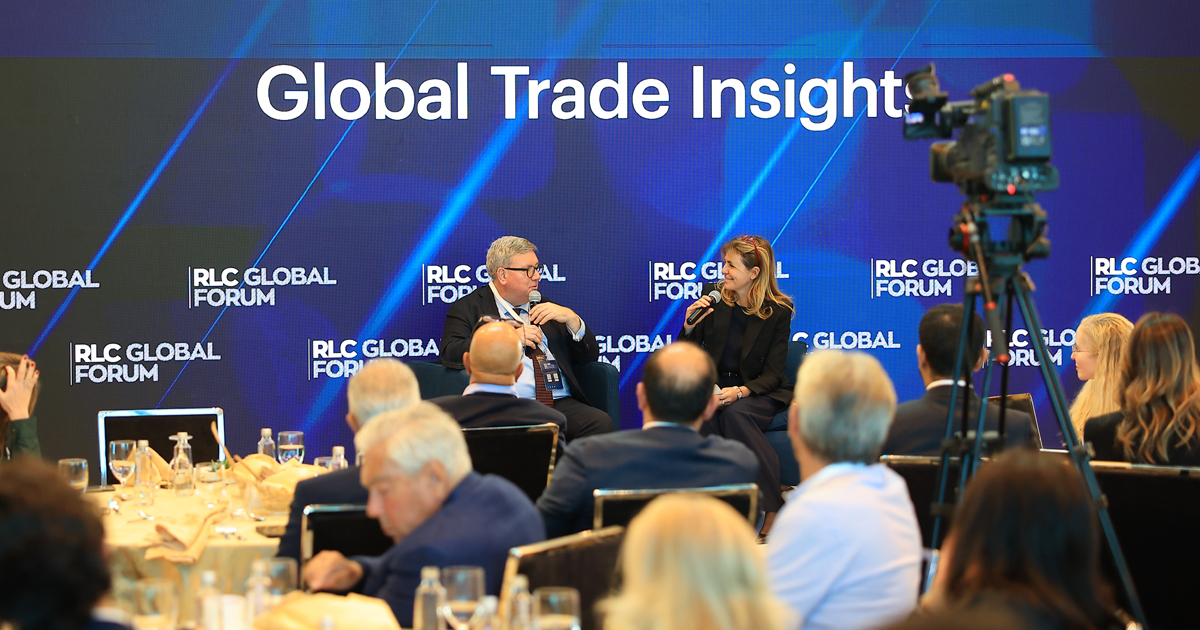Key Statistics
- +60% of companies are reevaluating their supply chains in response to trade restrictions and geopolitical uncertainty.
- The AI-driven economy is projected to increase global GDP by up to 15% by 2030 but concerns about workforce readiness and digital inequality remain.
- South-South trade is growing at a rate of 10% annually, reflecting the increasing influence of emerging markets.
- Only 40% of businesses currently have a clear AI adoption strategy, highlighting the need for greater investment in workforce training and implementation.
The ongoing U.S.-China trade conflict continues to pose significant operational obstacles for businesses reliant on Chinese sourcing and manufacturing. The Trump administration’s imposition of a 10% tariff on Chinese imports, has exacerbated these challenges. To mitigate tariff risks, companies are turning to alternative manufacturing hubs like India, Southeast Asia, and Latin America.
Meanwhile, trade tensions between the U.S. and the EU are escalating, with the EU’s proposed 50% tax on American whiskey prompting a potential 200% U.S. tariff on European alcoholic beverages—a move that could disrupt global supply chains and digital commerce.
Additionally, the Trump cabinet has imposed a 25% tariff on Canadian steel and aluminum, straining diplomatic ties and posing economic challenges. Now more than ever, these shifting trade policies highlight the need for businesses to stay agile and informed in navigating the complexities of international commerce.
Simon Evenett, Professor of Geopolitics & Strategy at the IMD Business School and Cristiana Falcone, Chairperson at the BECS Foundation, tackle the subject and offer rare insights at the “Navigating Global Trade in a Fragmented World” session, held during the 2025 RLC Global Forum.
The Role of AI in Global Productivity and Workforce Transformation
Artificial Intelligence (AI) is redefining global productivity and reshaping industries at an unprecedented scale. While AI has the potential to enhance business efficiency, optimize decision-making, and automate tasks, there are concerns about its long-term impact on employment and economic equality. One of the most debated topics is whether AI will lead to job displacement or create new opportunities. While AI augments productivity for professionals with established expertise, the concern is that younger professionals may not develop the deep skills needed to leverage AI effectively. If businesses fail to invest in workforce development, AI could exacerbate income inequality by favoring those who already possess high-level skills while displacing those in lower-skilled roles.
Universities and institutions are currently grappling with how to integrate AI into education. Some schools are banning AI tools, while others encourage their use to level the playing field for students. However, the larger question remains: Will AI empower the workforce or create a divide between those who can use it effectively and those who cannot?
The Future of ESG: Is It Still Relevant?
In recent years, ESG (Environmental, Social, and Governance) principles have been at the center of corporate decision-making. However, ESG is now facing significant backlash, particularly in certain regions such as the United States. Some investors and policymakers are questioning the economic viability of ESG initiatives, while others argue that sustainability remains a fundamental part of long-term business strategy. Rather than abandoning ESG, companies need to refine their approach. Instead of pursuing ESG for the sake of branding, businesses should focus on tangible, measurable impact, whether through carbon reduction initiatives, supply chain sustainability, or ethical labor practices.
Regional Trade and the Rise of South-South Partnerships
Many leaders in Africa, the Middle East, and Asia are actively exploring new trade agreements, investment opportunities, and supply chain partnerships outside of traditional Western markets. Countries such as Saudi Arabia, the UAE, and India are taking a leadership role in expanding regional trade networks, investing in infrastructure, and positioning themselves as global hubs for commerce. As the U.S. and China become increasingly inward-focused, many companies are seeing greater potential in emerging markets rather than relying on historically dominant economies.
At the same time, economic regionalization is gaining traction. Instead of global free trade, countries are increasingly forming regional economic clusters that prioritize strategic industries, resource independence, and technological innovation. This trend is expected to reshape global trade flows in the coming decades.
“The global trade environment is shifting from globalization to regionalization. Companies that rely on cross-border supply chains must rethink their strategies and ensure resilience in an era of trade restrictions.”
– Simon Evenett







